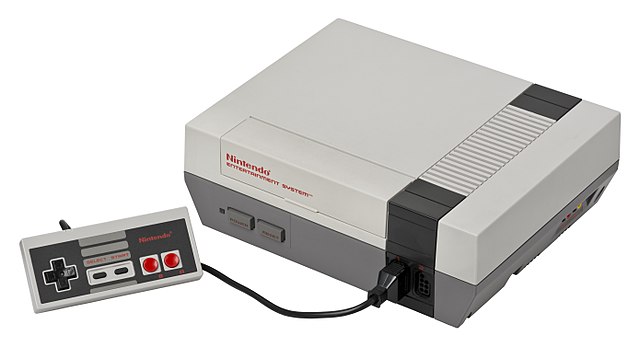
If the video game crash of 1983 taught us anything it’s that nothing is a sure thing. Atari probably thought they would be in it for the long haul. They were wrong but an emerging company, and a new system, would be.
The Nintendo Entertainment System or NES was an 8-Bit video game system that came out in 1985. It originally started in Japan in 1983 as the Famicom but the Nintendo Entertainment System would revitalize the video game industry and became the best-selling console of its time.
You can listen to the podcast version or read on!
If there’s one memory I have from childhood that stands out among all others is the day I first beat the original Mario brother’s game. After MANY failed attempts getting past Bowser on that bridge I finally timed my run perfectly and ran under him to beat level 8-4. I didn’t have flower power-up or was even big, I
I remember almost feeling like I was watching myself play this final sequence, and it felt like time had slowed down. Whatever, I had finally conquered this game.
This was months after first getting the new Nintendo Entertainment System at Christmas of 1986. That was like another out of body
A lot of kids got that first NES system at Christmas of ‘86 and ’87 and that started the second era of video games after the great video game crash of 1983. This one wouldn’t fail but would go on to be a massive part of childhood for pretty much every kid in existence.
Here now is the story of Nintendo and that first console, the Nintendo Entertainment System
The Early History Of Nintendo
There’s a long story that goes behind the creation of Nintendo and the NES but it goes back way further than you may realize. Like all the way back to 1889.
Nintendo started out as a Japanese trading card company in Kyoto, Japan founded by Fusajiro Yamauchi in September of 1889. The trading cards were called Hanafuda meaning “flower cards” and you could play a number of games with them. They were kind of a form of gambling and had been used like that for a while. (if you wondered why there
Yamauchi called the company Nintendo Koppai. The name Nintendo had been assumed to mean “leave luck to heaven”. Pretty good name to associate with gambling…
Yamauchi retired from the company in 1929 and his son in law took over the business. The company would have a name change and was now called Nintendo Yamauchi ltd. The early cards were hand made and printed on bark but as the company grew they became the first company in Japan to make cards out of plastic in 1953.
In 1959 they made a deal with Disney to start printing Disney Characters on the Nintendo trading cards. The tie in was a big success with Nintendo selling 600,000 packs in one year. At this point, they had been called the Nintendo Trading Card Co., Ltd but that was all dropped in 1963 to just be called Nintendo.
Nintendo Starts Creating Electronic Games
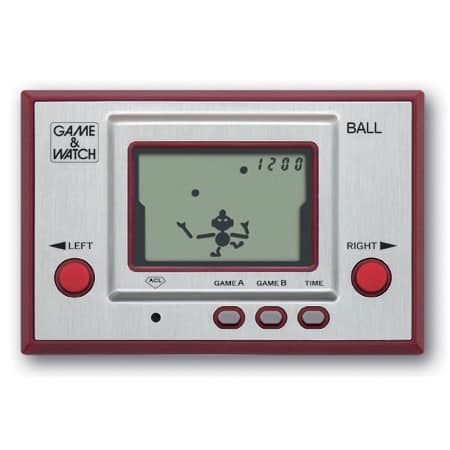
Nintendo started adding in other types of products over the years including things like vacuums but everything failed until they started making toys, specifically electronic toys. It was hard for Nintendo to exist in the Japanese toy market against the huge toy companies of the day but a mechanical arm called the “Ultra Hand”
They would be involved with many toys including a solar-powered light gun called the Nintendo Beam Gun –
Nintendo was
The Introduction Of The Famicom
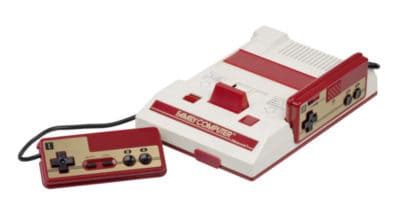
In 1980 Nintendo started to produce some hand-held games called “Game Watch” which were simple digital games that also contained a clock and alarm clock. These things were a massive hit and sold 43.4 million units worldwide.
In 1982 Nintendo came up with an early prototype called the “Advanced Video System” or AVS for short. It had controllers much like the NES would use and also had a tape drive, light gun, and joystick. It was also made with a computer at its core like the Atari 400 or Commodore 64.
It was however just a prototype and was never released. Instead, Nintendo was putting their efforts into the Famicom. It was their first attempt at making a cartridge based console and they were able to release it in July 1983. Famicom was short for “Family Computer” and it was originally planned to be a 16-bit system with full computer function including a keyboard and floppy disk.
The Famicom
The Famicom was first released in Japan and came with Popeye, Donkey Kong, and Donkey Kong Jr. It actually was kind of slow to sell as it had some bad hardware that was pushing people away but a major recall, along with a new motherboard, made it become the best selling console in Japan by the end of 1984.
Coming To America
So the Famicom is a big hit in Japan but would it crossover well to America? Nintendo wasn’t entirely sure and had planned originally to partner with Atari and release the Famicom as the Nintendo Advanced Video Gaming System. Everything looked good but a bit of a hiccup would happen at the 1983 Consumer Electronics Show.
The deal was going to be finalized at CES ‘83 but Atari discovered that at the show that its competitor, Coleco, was illegally demonstrating its “Coleco Adam” computer with a Donkey Kong video game. This caused a big issue and was a violation of Atari’s exclusive license with Nintendo to publish the game with its own system. This ended up delaying the marketing contract Atari had with Nintendo to promote the new console.
Basically, the deal went to crap and Nintendo decided to just market the system on their own.
It would take a while to get the Famicom ready for release in the States as Nintendo wasn’t sure what to include with it and what
The 1985 Consumer Electronics Show
1985 was a great year, not just because Back to the Future came out but because of that years CES. Nintendo unveiled to America the Famicom. It had a new design to it and an easier to use cartridge slot. It also switched the top loading feature, from the original version to a front-loading system that was more similar to a VCR. The VCR’s popularity was growing like wildfire and Nintendo thought this would be a good way to differentiate themselves from other consoles.
Nintendo would first try out the new systems in select locations in October 1985 and followed with a full-on nationwide release in February 1986. By September of ’86, it would be in stores nationwide. There were also 17 titles that would be available:
- 10-yard fight
- Baseball
- Clu Clu Land
- Duck Hunt
- Excitebike
- Golf
- Gyromite
- Hogan’s Alley
- Ice Chamber
- Kung Fu
- Pinball
- Soccer
- Stackup
- Tennis
- WIld Gunman (I’m a crack shot at this)
- Wrecking Crew
- Super Mario Bros
Launching the new system was not only representing something new but trying to wash away the disaster of the 1983 video game crash. Video games had got really out of control with no standard of quality control. Anyone could make a video game for the Atari, and since they weren’t even checking out the new titles, a lot of crap flooded the market damaging consumer confidence. Nintendo would later combat this with the “Nintendo Seal of Quality” which means anything released, not made by them, had to be approved.
Nintendo wasn’t trying to screw anyone over the way Atari had inadvertently done. They wanted to present what you were actually getting. If you remember back to the Atari days the artwork on the packaging and the cartridges made the games look like you were about to play an actual movie. Once you put it in you realized what garbage it actually was. You need to look no further of a prime example of this than the E.T video game.
Nintendo would use imaging on the packaging and artwork that was similar to what you would be playing in the game. It was a “what you see is what you get” situation and it was a smart one. Before even playing the game you knew what the graphics were going to look like on those first 17 games. And they would look pretty good.
Nintendo made it clear that not only was their technology better, but it would also be consistent across all the games.
The Nintendo Difference
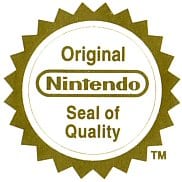
Nintendo had
The Nintendo Entertainment System
The machine itself was now referred to as a “console” instead of a “control deck”. They also distanced themselves from the use of the word “video games” and instead you would be using “Game paks” to play. This was also strategic as it gave them more traction to sell the new system in stores.
They also went full on with making sure no outside games could be used with the NES. To deter production of crappy knock-off games Nintendo came up with the 10NES Lockout chip. This was a system that ensured that the Game paks would match with the consoles. There could be no copying and knock off games that you would be able to buy for cheap, they simply wouldn’t work on the consoles.
Marketing To Children
In Japan, the Famicom was never really geared towards children which, looking back, seems kind of short-sighted. Nintendo of America was going to capitalize on the huge youth market who had already developed a taste for video games with Atari and wanted more. They made a strict policy that would censor any profanity, sexual, religious or political comment. This was a proactive approach but was there the risk of a lot of swearing Catholic strippers in games like Pinball or Excitebike??
This was famously used early on when LucasFilm was trying to put out Manic Mansion. It has a real comedy/horror theme to it and it had to be considerably watered down from its original version in order to comply with Nintendo’s standards.
Along with marketing to kids, Nintendo wanted to make something very clear; this was high technology and anything before it was primitive and crude. Their big foray into making this known was with the Robotic Operating Buddy or R.O.B. Do you remember this at all? I remember being blown away by it when seeing it in the commercials as a 9
R.O.B was a way to show how advanced the technology was but also incorporate in a “toy” making the NES feel as close to the toy market as it was to the video game market – another brilliant strategy.
Over the next couple of years the first Nintendo Entertainment System would come in 4 different bundles:
- The Deluxe Set– contained the control deck, R.O.B, the light gun called the “zapper”, TWO controllers and Duck Hunt and Gyromite.
- The Action Set– Came with control deck, Zapper gun, two controllers and Super Mario Bros and Duck Hunt
- The Power Set– Came with the console, two controllers, Zapper gun, the Power Pad (remember that for running on?) and 3 games; Mario, Duck Hunt, and World Class Track meet
- The Basic Set– Either $89.99 for just the console or $99.99 for the console and Mario Bros.
The action set was probably the most popular and rang it at $149.99 which today is the equivalent of around $313. That high-end deluxe set was a steep chunk of change originally retailing for $179.99 which would be about $450 today. Yikes.
The Initial Reception To the Nintendo Entertainment System
The NES essentially came out in late 1986. By 1988 it had transformed the video game industry and the popularity had grown so quickly that the market for Nintendo cartridges was bigger than for all home computer software. Take that nerds.
Just in 1988, 7 million systems were sold which was almost as many Commodore 64’s that were sold over a 5-year span. Suck it, nerds! Nintendo crushed whatever other video game systems that were out there and sent them running for the hills. By 1990 30% of homes would have an NES which is pretty crazy to think about when a majority of homes would not have any interest in it. Those households with kids were pretty much certain to contain one.
Within 3 years the NES had outsold all previously released consoles worldwide.
So many retailers had been wary of the new system after the video game crash and when the NES was released it was still considered by many to be a passing fad. What started as a trading card company almost exactly 100 years prior had now revolutionized the video game industry. The name Nintendo was now more associated with video games than Atari had been.
As the ‘90s were about to start there were questions whether the Nintendo Entertainment System was going to be able to survive against the new advent of 16-bit systems, particularly the Sega Genesis. But Nintendo was playing around with something called the Super Famicom back in Japan.
You would know it as Super Nintendo.
But that story will have to wait for another time…
The Legacy Of The NES & Nintendo
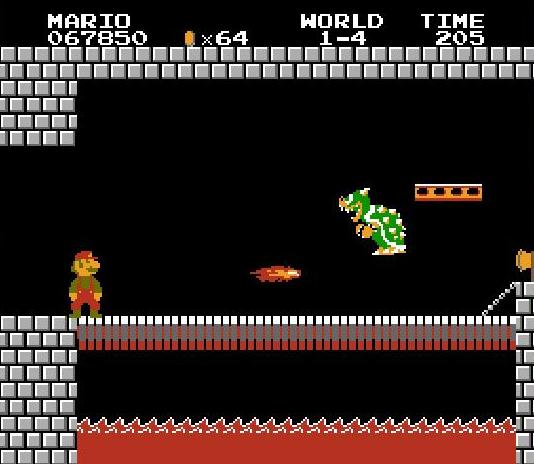
There’s not much more that can be covered about all this that I haven’t already said, the NES was part of my – and I’m sure your – childhood. Any money I could get my filthy hands on was to buy the next game that I could. I remember renting Blades of Steel every week from a local video game store so many times I probably could have just bought it straight up.
The greatest gift that you could possibly receive in those days was a new game. Super Nintendo would take that to the next level but until then we were the kings of the universe. These games changed our lives and check out this blog by a guy named Pat on the specific NES games that shaped his life.
Nintendo actually was still making the NES for a while but officially stopped production on August 14, 1995.
Besides giving us so many of our childhood memories and thrills the original NES launched some massive video game franchises and set the standard for the development of modern video games. Among some franchises it gave us were:
- Super Mario Bros
- The Legend of Zelda
- Metroid
- Final Fantasy
- Dragons Quest
- MegaMan
- Castlevania
It was a golden era but one that can still

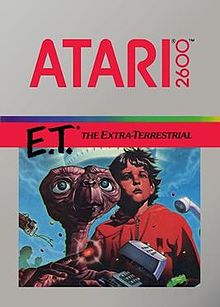


Comments
Comments are closed.